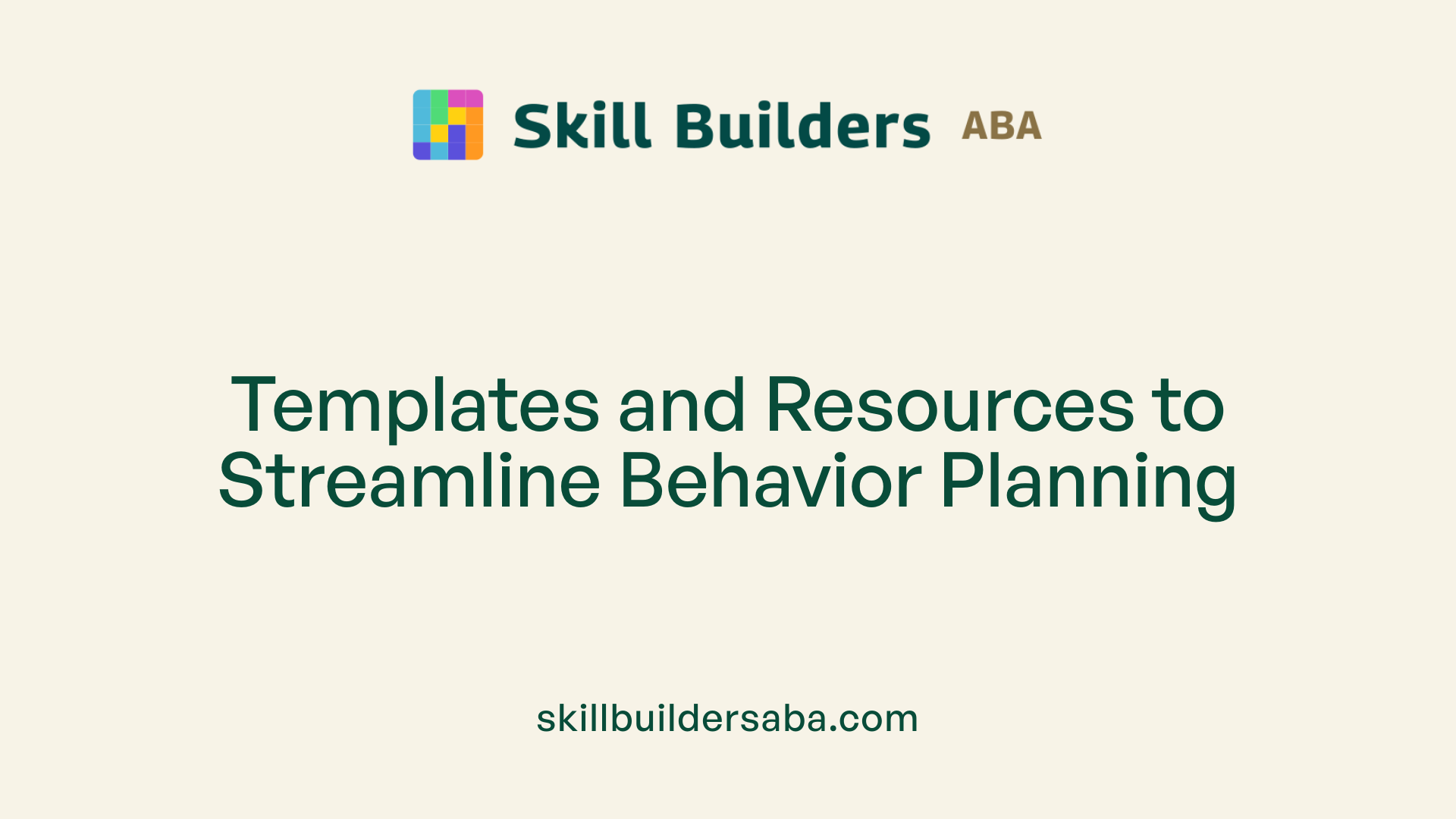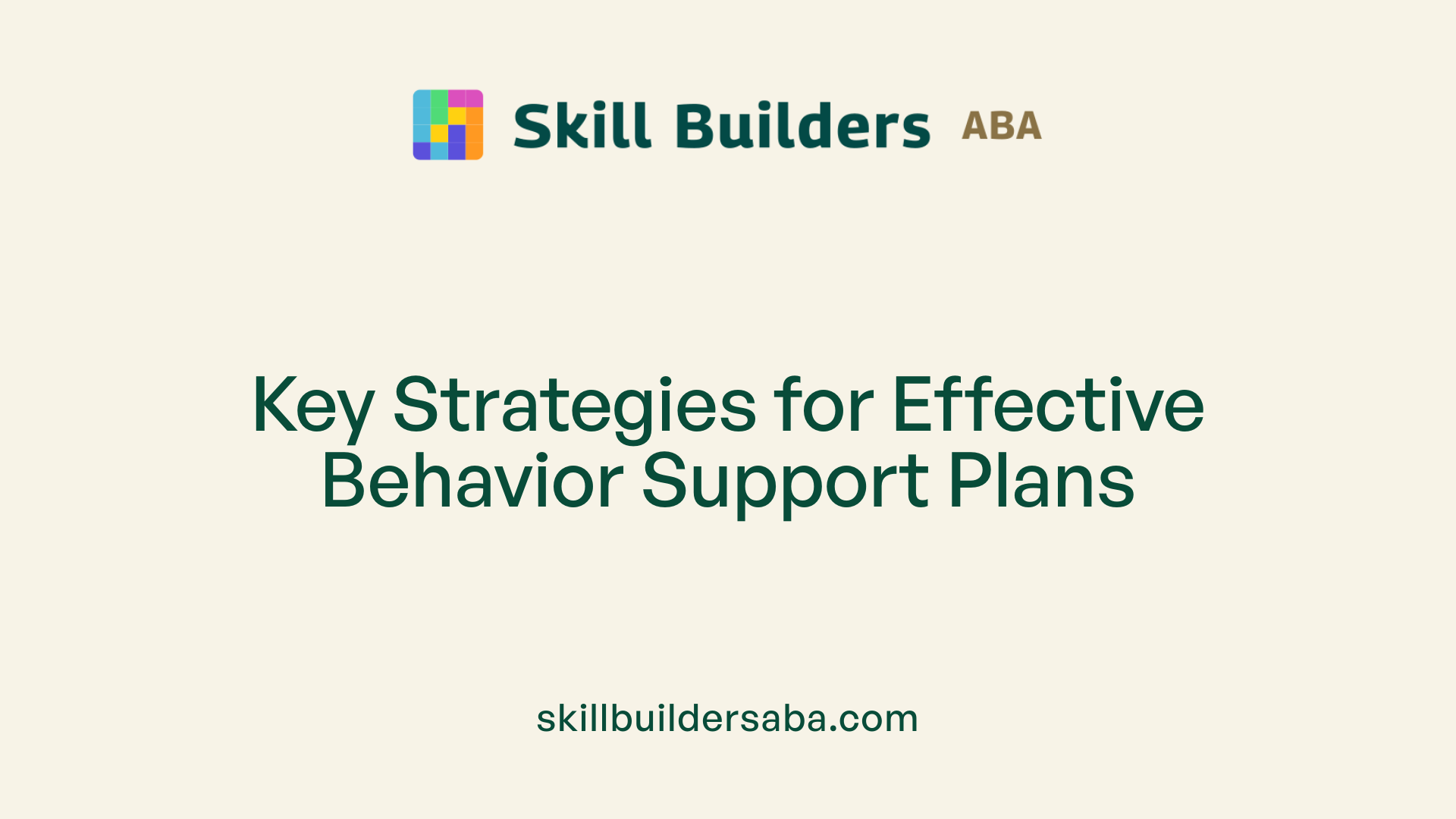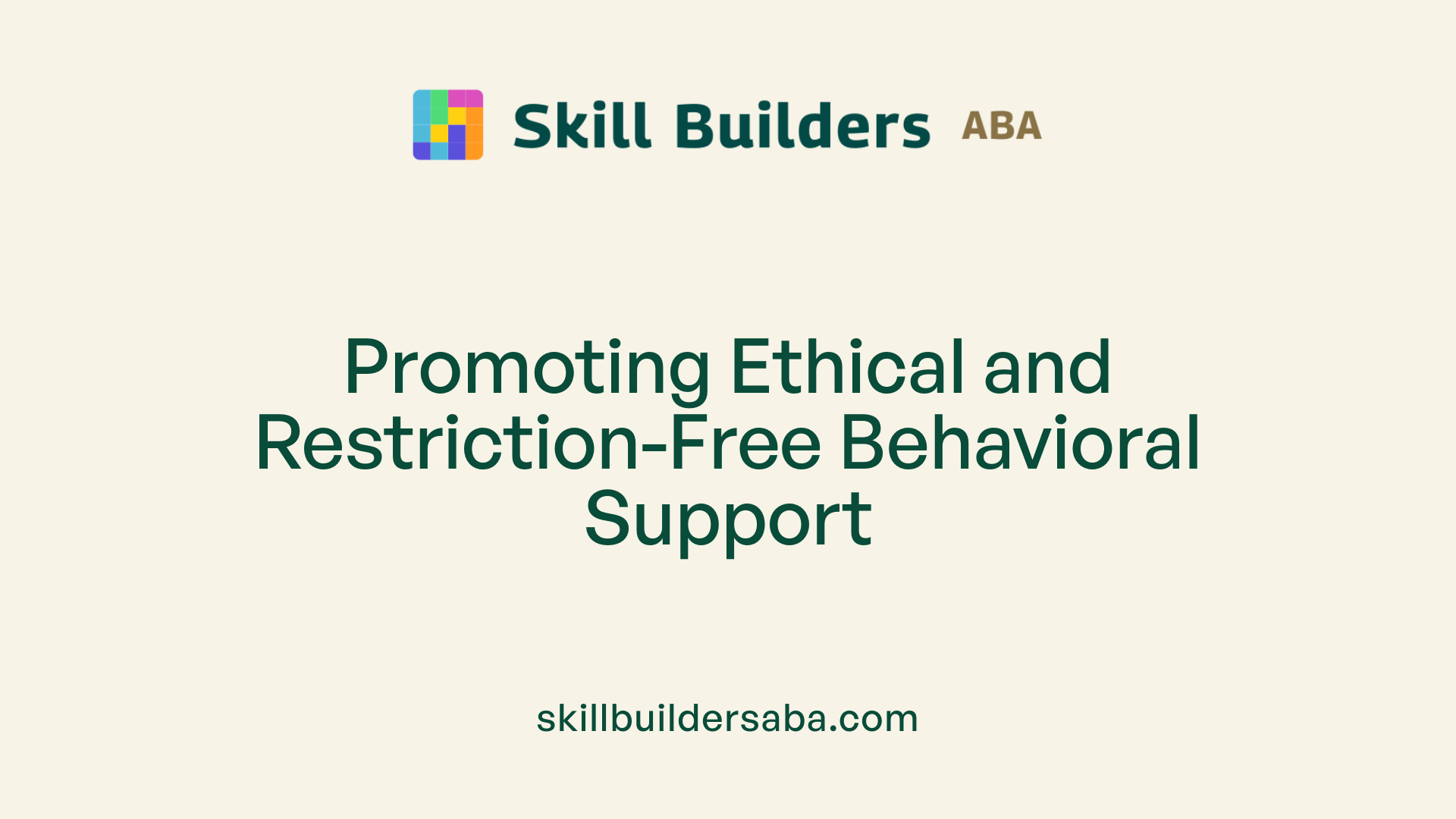How to develop a behavior support plan
Transforming Support Strategies with Effective Behavior Plans

Understanding Behavior Support Planning
Creating a robust behavior support plan (BSP) is essential for fostering positive behavioral change and promoting meaningful participation for individuals with challenging behaviors. This comprehensive guide explores the critical components, development processes, and practical strategies necessary for designing and implementing effective plans that meet regulatory standards and individual needs.
Foundations of Behavior Support Planning

What is a behavior support plan, and why is it important?
A behavior support plan (BSP) is a strategic document that outlines how to help individuals improve certain behaviors or acquire new skills. Its main purpose is to reduce problematic behaviors and promote positive, functional behaviors that enhance quality of life. The BSP is often part of a larger treatment framework, like an Individualized Education Program (IEP), or a behavior intervention component within a support system.
Creating a solid plan ensures consistency across settings and caregivers and provides clear guidance for intervention strategies. It systematically maps out ways to prevent problematic behaviors and teaches alternative, more appropriate behaviors—serving as a roadmap for caregivers, teachers, and support staff.
Why is data-driven decision making vital in behavior support planning?
Good decisions in behavior support rely heavily on collecting and analyzing data. Data collection helps identify the behaviors that need intervention, understand their frequency, and determine the context in which they occur.
Regular monitoring with tools like ABC data (Antecedent-Behavior-Consequence records), frequency counts, and duration measures enables practitioners to evaluate whether strategies are effective or if adjustments are needed. Using ongoing data supports a dynamic approach, allowing the plan to evolve based on the individual’s progress.
What role does a Functional Behavioral Assessment (FBA) play?
The backbone of any effective BSP is a thorough Functional Behavioral Assessment (FBA). This assessment involves gathering detailed information from observations, interviews with caregivers and teachers, review of records, and sometimes direct functional analysis.
An FBA helps to identify triggers and maintaining consequences of behaviors and hypothesize the behavioral function—whether the person is seeking attention, escaping demands, gaining access to tangibles, or satisfying automatic internal needs.
Understanding these functions guides the development of targeted interventions that are more likely to succeed because they address the root causes of behavior.
How is a behavior support plan developed?
The development process begins with a comprehensive assessment to explain the individual’s behavior, including its history, antecedents, and consequences. Based on this, a team identifies specific strategies to reduce risk, support skill acquisition, and improve quality of life.
A typical process includes defining the targeted behaviors clearly using observable and measurable terms, developing hypotheses about their functions, and then designing interventions. These interventions often involve modifying antecedents (what happens before the behavior), teaching replacement skills, and implementing consequence strategies that reinforce appropriate behavior.
The plan must be collaborative, include input from family, educators, and support staff, and be compliant with legal and regulatory guidelines, especially when restrictive practices are involved.
Main components of an effective behavior support plan
A comprehensive BSP is structured around three core elements:
| Component | Description | Example |
|---|---|---|
| Antecedent Modifications | Strategies to prevent triggers or setting events before behaviors occur | Visual schedules, preferred activities, giving choices |
| Teaching Replacement Behaviors | Skills that serve the same function as the problematic behavior | Requesting a break instead of yelling |
| Reinforcement & Response Strategies | How to reinforce positive behaviors and respond to challenging behaviors | Praise for appropriate requesting, redirection after a tantrum |
This integrated approach ensures that interventions are proactive, educational, and supportive.
Use of templates and examples for support plans
Many organizations provide templates and sample plans to streamline development. These samples include structured formats for defining behaviors, hypothesizing functions, and outlining intervention steps.
Templates help ensure all critical components are covered, like setting supports, teaching strategies, crisis plans, and progress tracking. They are available in various formats including PDFs, spreadsheets, and online modules, often aligned with best-practice models such as Positive Behavior Support (PBS).
Monitoring progress and making adjustments over time
Effective BSPs are not static. Regular data collection on targeted behaviors is essential—tracking how often behaviors occur, their duration, and how quickly they happen after antecedents.
Analysis of this data reveals whether interventions are working or need refinement. For example, if a replacement behavior isn’t emerging or isn’t replacing the problem behavior effectively, adjustments such as changing the reinforcement or introducing new teaching strategies may be necessary.
Team meetings should be scheduled routinely to review data, discuss challenges, and modify strategies. Engaging all stakeholders—teachers, parents, therapists—in this process promotes consistency and long-term success.
Application of behavioral support plans in educational settings
In schools, BSPs are integral to frameworks like Positive Behavioral Interventions and Supports (PBIS). Plans are tailored to the individual needs of students but also contribute to a supportive school culture.
Implementation involves classroom modifications, individualized instruction, and reinforcement systems. Teachers are trained to maintain consistency, utilize proactive strategies, and collaborate with specialists.
Ongoing data collection and staff training ensure the plans remain responsive. When properly executed, BSPs foster positive social interactions, emotional regulation, and academic engagement.
Strategies and best practices for effective plan development
Developing a successful BSP involves key steps:
- Conduct a functional assessment to understand behavior functions.
- Define behaviors clearly using operational definitions.
- Collaborate with the team, including family and support staff.
- Design individualized interventions, combining antecedent modifications, skill teaching, and reinforcement.
- Use evidence-based practices grounded in research.
- Train staff thoroughly to implement strategies with fidelity.
- Collect and analyze data regularly for ongoing evaluation.
- Adjust the plan based on data to improve outcomes.
By following these practices, teams can create effective, dynamic, and compassionate support plans that respect individual differences and promote positive change.
Templates and Resources for Behavior Support Planning

Are there templates or examples available for behavior support plans?
Yes, a wide range of templates and example plans exist to support educators, therapists, and family members in creating effective behavior support strategies. These resources serve as helpful starting points for developing personalized plans tailored to individual student needs.
Templates often include structured formats that guide users through critical components of a plan, such as defining target behaviors, hypothesizing functions, identifying antecedent modifications, and selecting appropriate reinforcement strategies. Many of these examples are designed to align with the Positive Behavior Support (PBS) approach, emphasizing proactive strategies and skill teaching.
Available formats vary to suit different needs and contexts. Common resources include PDFs, printable worksheets, interactive online templates, and comprehensive guides that walk through each step of the process. These tools frequently incorporate sections for data collection, goal setting, and progress monitoring, which are essential for effective plan implementation.
Functional Behaviour Assessment (FBA) tools and sample behavior plans can make the planning process more accessible. They help users analyze behaviors systematically and develop targeted, evidence-based interventions. These samples often demonstrate how to operationalize behavior definitions, develop hypotheses about the behavior’s function, and design appropriate intervention components.
Various platforms and sources offer these templates and resources. Websites dedicated to special education and behavioral intervention provide downloadable resources and example plans. Additionally, books, online courses, and workshops offer detailed guidance, often including template examples that stakeholders can adapt.
The availability of these ready-made tools simplifies the development process and ensures consistency and comprehensiveness in behavior support planning. Incorporating these resources can improve outcomes by promoting clear, replicable, and effective intervention strategies.
Formats and types of template resources
The types of available templates include:
| Format | Description | Suitable For |
|---|---|---|
| PDF Files | Printable templates and guides that can be customized | Teachers, therapists, parents |
| Interactive Online Templates | Web-based forms with fill-in options, often with prompts | Schools, institutions using digital tools |
| Step-by-Step Guides | Manuals that walk through the entire planning process | New professionals, training purposes |
| Worksheets & Checklists | Focused on specific components like behavior definitions or data logging | Field observations, quick reference |
| Sample Plans | Complete example documents illustrating good practice | Study and adaptation |
Use of templates in developing personalized plans
Templates serve as practical tools that streamline the creation of comprehensive behavior support plans ( BSPs). By providing a clear framework, they help ensure all essential elements—such as operational definitions, function hypotheses, antecedent strategies, reinforcement methods, and crisis procedures—are systematically addressed.
Using these templates, professionals and families can efficiently gather and organize data from observations, interviews, and record reviews. This structured approach encourages consistency across team members, fostering collaborative efforts.
Importantly, templates are adaptable. While they provide a solid foundation, users are encouraged to modify them based on individual circumstances, preferences, and specific behavioral goals. This flexibility enhances the relevance and effectiveness of the resulting plans.
In practice, a typical process might involve selecting an appropriate template, customizing it to reflect the student’s unique needs, using it to collect baseline data, and then developing specific intervention components. Throughout implementation, the same template can guide progress monitoring and eventual plan revision.
Overall, templates are valuable resources that support the creation of thorough, clear, and actionable behavior plans, ultimately contributing to improved behavioral and learning outcomes for students.
| Aspect | Key Features | Benefits |
|---|---|---|
| Comprehensive Coverage | Includes behavior definitions, goals, intervention steps, monitoring tools | Ensures all critical elements are addressed |
| User-Friendly Structure | Clear sections, prompts, easy to read layout | Facilitates understanding and consistent application |
| Customization Options | Editable fields, adaptable modules | Meets individual needs and settings |
| Evidence-Based Content | Incorporates research and best practices | Promotes effective interventions |
| Multi-Format Availability | PDFs, online tools, printable worksheets | Accessibility and convenience |
By utilizing these varied resources, educators and caregivers can develop well-structured, individualized strategies that promote positive behavior change and support meaningful progress.
Best Practices in Development and Implementation of Behavior Plans

Conducting comprehensive assessments
Developing an effective behavioral plan begins with a thorough understanding of the individual's behavior through comprehensive assessments. This includes functional behavioral assessments (FBA), which analyze the antecedents, consequences, and environmental factors influencing behavior. Direct observations, interviews with educators, caregivers, and the individual, as well as a review of records, are integral to gathering detailed information. Functional Analysis (FA), although more intrusive, can be used when necessary for its reliability, while FBA provides valuable hypotheses in a less invasive manner.
The assessment phase helps identify the purpose of the behavior, such as gaining attention, escaping demands, obtaining tangible items, or automatic reinforcement. Clearly defining problem behaviors using operational descriptions—covering what, where, when, who, and how often—is essential for consistency in intervention.
Collaborative team approach
Creating a behavior intervention plan (BIP) is inherently a team effort involving educators, behavioral specialists, family members, support staff, and, when appropriate, the individual. This collaborative approach ensures that all perspectives are considered, and the plan reflects the student's generalization across environments. Person-centered planning techniques facilitate the inclusion of the individual’s interests and goals, fostering buy-in and motivation.
Regular team meetings support ongoing communication, training, and shared responsibility for implementing and monitoring the intervention strategies. Legal and ethical guidelines require obtaining informed consent from guardians or individuals before intervention, especially when restrictive or intrusive strategies are involved.
Selecting evidence-based interventions
Interventions should be rooted in research and tailored to the assessment findings. Strategies include modifying antecedents—such as environment adjustments, visual schedules, or choice provision—to prevent problematic behaviors. Teaching functionally-equivalent replacement behaviors (FERBs) allows the individual to meet the same needs in more appropriate ways, like requesting a break instead of yelling.
Reinforcement is central—using positive, consistent, and individualized reinforcement for desired behaviors (e.g., praise, tokens, preferred activities). Consequences must be managed carefully to discourage undesirable behaviors without causing harm or escalation.
Behavior support strategies span proactive (preventive), reactive (response to behavior), restrictive, and environmental interventions. The plan’s effectiveness depends on sound intervention selection, consistent implementation, and ongoing evaluation.
Data collection and progress monitoring
A core aspect of the BIP is a systematic approach to data collection. Using methods such as ABC data, frequency counts, duration, or partial interval recordings allows team members to measure progress over time objectively.
Regular data reviews help determine if strategies are effective or if adjustments are necessary. Visual charts and graphs facilitate quick understanding and communication of trends. Consistent monitoring ensures interventions remain aligned with the individual’s evolving needs and promote progress towards behavioral goals.
Training and staff support
Staff implementing the BIP require comprehensive training to ensure fidelity and effectiveness. Training covers the operational definitions of behaviors, intervention procedures, data collection methods, and crisis response protocols.
Support includes ongoing coaching, modeling, and feedback to reinforce proper implementation. Encouraging open communication and a supportive environment helps staff feel confident and competent. When staff are well-trained and supported, the consistency and success of the intervention significantly improve.
| Aspect | Description | Additional Notes |
|---|---|---|
| Assessment | Use FBA and FA to identify behavior functions | Gather data through observations, interviews, record review |
| Collaboration | Involve team members including family | Ensure diverse insights and shared responsibility |
| Interventions | Use evidence-based strategies | Modify antecedents, teach FERBs, reinforce desired behaviors |
| Data & Monitoring | Collect and review progress data regularly | Use visual tools like charts and graphs |
| Staff Training | Provide comprehensive training and ongoing support | Maintain fidelity through coaching |
Effective development and implementation of behavior plans require integrating these practices into a dynamic process. Regular reviews, data-driven adjustments, and team collaboration are vital to achieving meaningful and lasting behavior change.
Monitoring, Review, and Updating of Support Plans

How do you monitor and adjust behavior support plans over time?
To effectively track and refine behavior support plans (BSPs), consistent data collection is vital. Practitioners regularly gather information on targeted behaviors, including how often they occur (frequency), how long they last (duration), and the time it takes for the behavior to start after a prompt (latency). This data helps identify patterns and measure progress over time.
Functional Behavior Assessments (FBAs) play a crucial role by uncovering the reasons behind behaviors—such as seeking attention, escaping demands, or obtaining tangibles. The insights from FBAs inform the development of tailored intervention strategies within the BIP.
Regular review meetings with team members—teachers, support staff, family, and the individual—allow for collective analysis of data. During these reviews, teams evaluate whether intervention strategies are effective, determine if behaviors are decreasing, and decide if adjustments are necessary.
Whenever data indicates little or no progress, strategies can be modified—whether that involves changing reinforcement methods, adding new instructional supports, or adjusting antecedent triggers. This dynamic process ensures the plan remains responsive to the individual's evolving needs.
Maintaining clear communication among team members and documenting all changes fosters fidelity in implementation. Engaging caregivers and stakeholders in ongoing monitoring promotes consistency across environments and increases the likelihood of positive behavioral outcomes.
In summary, it is through systematic data collection, collaborative review, and flexible adjustment that BSPs remain effective and aligned with each person’s growth and changing circumstances.
How can behavioral support plans be applied in educational settings?
In educational environments, behavioral support plans are integral for creating inclusive, positive climates that support all students. Frameworks like Positive Behavioral Interventions and Supports (PBIS) utilize tiered interventions, beginning with universal strategies for all students and escalating to targeted or intensive supports for individuals with more complex needs.
Initially, schools conduct FBAs to understand why a student engages in problematic behaviors. This understanding guides the development of personalized strategies that modify antecedents, teach alternative, functional skills, and provide reinforcement for positive behaviors.
At Tier 1, universal preventative strategies—such as clear expectations, visual supports, and social-emotional learning curricula—establish a positive school culture.
For students needing additional interventions, Tier 2 and Tier 3 support involves targeted team efforts, which may include small-group interventions or individualized plans. These strategies ensure that each student's specific triggers and needs are addressed.
Ongoing data collection—observation logs, behavior incident reports, and progress monitoring tools—helps educators evaluate whether interventions are effective. This process facilitates timely adjustments and ensures strategies remain aligned with student needs.
Effective staff training, collaboration with families, and culturally responsive practices are essential for implementing support plans that foster social, emotional, and academic success.
What are strategies and best practices for developing effective behavior intervention plans?
Creating impactful behavior intervention plans (BIPs) begins with an in-depth functional behavior assessment (FBA). Analyzing behavioral data—including observations, interviews, and record reviews—helps hypothesize the behavior’s purpose, such as gaining attention or escaping demands.
Once the behavior’s function is understood, the plan should include clear, measurable goals and specific, evidence-based strategies. These include antecedent modifications—altering environmental cues to prevent triggers—and teaching alternative, functionally equivalent behaviors (FERBs), like requesting a break instead of acting out.
Positive reinforcement plays a vital role; rewarding desired behaviors encourages their recurrence. Strategies should also outline responses to challenging behaviors that prioritize safety and support, such as redirection or calming techniques.
Collaboration with caregivers, teachers, and specialists ensures the plan is consistent, feasible, and culturally appropriate. Training staff on implementation procedures promotes fidelity and effectiveness.
Regular progress monitoring through data collection enables teams to evaluate the plan's impact. Based on this data, strategy adjustments are made—whether that involves increasing reinforcement, adding new skill-building activities, or modifying antecedent conditions.
Overall, the hallmark of successful BIPs is their clarity, responsiveness, and data-driven approach, ultimately fostering meaningful behavior change and positive growth.
Addressing Restrictive Practices and Ethical Considerations

How can behavioral support plans be applied in educational settings?
Behavioral support plans (BSPs) are essential tools in educational environments to promote positive behaviors while reducing problematic conduct. These plans are tools that integrate with broader frameworks like Positive Behavioral Interventions and Supports (PBIS), which utilize a tiered approach to cater to a wide range of student needs.
In practice, developing a BSP starts with conducting thorough Functional Behavioral Assessments (FBAs) to understand why a student exhibits certain behaviors. This understanding guides the creation of targeted strategies that modify antecedents—events that trigger behaviors—and teach new, appropriate skills that serve the same purpose as the maladaptive behaviors.
Interventions are typically layered to suit different levels within the school setting. Tier 1 involves universal strategies, such as visual schedules and positive reinforcement, applied school-wide to foster a positive climate. Tier 2 provides additional targeted support through small-group interventions for students showing signs of escalating behaviors. Tier 3 involves intensive, individualized plans for students with complex needs.
Successful implementation depends on collaboration among educators, behavior specialists, families, and students. This partnership ensures that interventions are culturally sensitive, relevant, and sustainable.
Constant monitoring through data collection allows teams to evaluate the effectiveness of support strategies regularly. Adjustments are made based on observed progress, ensuring that interventions remain responsive and promote social, emotional, and academic success for every learner.
This structured yet flexible approach helps create an inclusive learning environment that values positive behavior development and minimizes reliance on restrictive practices. Ultimately, it emphasizes not only behavior change but also the dignity and rights of students, fostering a safe and supportive school community.
Achieving Successful Behavior Outcomes
Developing an effective behavior support plan requires a comprehensive, data-informed approach that integrates assessment, strategic intervention, collaboration, and ongoing review. When tailored to individual needs and grounded in ethical practices, these plans facilitate positive behavior changes that support social, emotional, and educational success. Proper planning, consistent implementation, and regular adjustments ensure that individuals receive respectful, effective support that promotes autonomy and dignity while minimizing restrictive practices.
References
- Behavior Intervention Plan (BIP): The Complete Guide to Writing a ...
- What Is a Behavior Intervention Plan? [PDF Template]
- 5: Developing the Behavior Intervention Plan
- 3.16 – Behavior Support Strategies and Plans - Open Door Columbus
- Positive Behavior Support Plans - VCU Autism Center for Education
- Behavior Support Plan Requirements and Expectations
- A Step-by-Step Guide to Developing Behavior Intervention Plans - n2y
- Writing a Positive Behavior Support Plan - Special Connections
- What is a Positive Behavior Support Plan? - Watson Institute
.svg)














